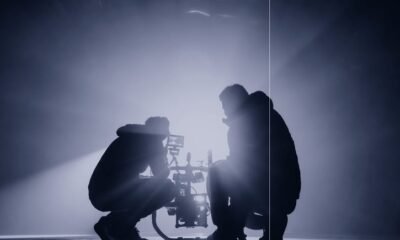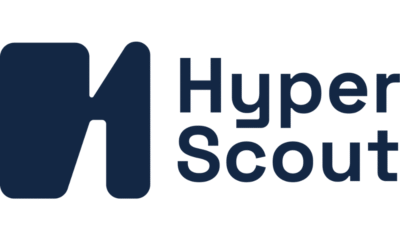Tools & Platforms
The uproar over Vogue’s AI-generated ad isn’t just about fashion

Sarah Murray recalls the first time she saw an artificial model in fashion: It was 2023, and a beautiful young woman of color donned a Levi’s denim overall dress. Murray, a commercial model herself, said it made her feel sad and exhausted.
The iconic denim company had teamed up with the AI studio Lalaland.ai to create “diverse” digital fashion models for more inclusive ads. For an industry that has failed for years to employ diverse human models, the backlash was swift, with New York Magazine calling the decision “artificial diversity.”
“Modeling as a profession is already challenging enough without having to compete with now new digital standards of perfection that can be achieved with AI,” Murray told TechCrunch.
Two years later, her worries have compounded. Brands continue to experiment with AI-generated models, to the consternation of many fashion lovers. The latest uproar came after Vogue’s July print edition featured a Guess ad with a typical model for the brand: thin yet voluptuous, glossy blond tresses, pouty rose lips. She exemplified North American beauty standards, but there was one problem — she was AI generated.
The internet buzzed for days, in large part because the AI-generated beauty showed up in Vogue, the fashion bible that dictates what is and is not acceptable in the industry. The AI-generated model was featured in an advertisement, not a Vogue editorial spread. And Vogue told TechCrunch the ad met its advertising standards.
To many, an ad versus an editorial is a distinction without a difference.
TechCrunch spoke to fashion models, experts, and technologists to get a sense of where the industry is headed now that Vogue seems to have put a stamp of approval on technology that’s poised to dramatically change the fashion industry.
Techcrunch event
San Francisco
|
October 27-29, 2025
They said the Guess ad drama highlights questions arising within creative industries being touched by AI’s silicon fingers: When high-quality creative work can be done by AI in a fraction of the time and cost, what’s the point of humans? And in the world of fashion, what happens to the humans — the models, photographers, stylists, and set designers — performing those jobs?
“It’s just so much cheaper”
Sinead Bovell, a model and founder of the WAYE organization who wrote about CGI models for Vogue five years ago, told TechCrunch that “e-commerce models” are most under threat of automation.
E-commerce models are the ones who pose for advertisements or display clothes and accessories for online shoppers. Compared to high-fashion models, whose striking, often unattainable looks are featured in editorial spreads and on runways, they’re more realistic and relatable.
“E-commerce is where most models make their bread and butter,” Bovell said. “It’s not necessarily the path to model fame or model prestige, but it is the path for financial security.”
That fact is running in direct contrast to the pressure many brands feel to automate such shoots. Paul Mouginot, an art technologist who has worked with luxury brands, said it’s simply expensive to work with live models, especially when it comes to photographing them in countless garments, shoes, and accessories.
“AI now lets you start with a flat-lay product shoot, place it on a photorealistic virtual model, and even position that model in a coherent setting, producing images that look like genuine fashion editorials,” he told TechCrunch.
Brands, in some ways, have been doing this for a while, he said. Mouginot, who is French, cited the French retailer Veepee as an example of a company that has used virtual mannequins to sell clothes since at least 2013. Other notable brands like H&M, Mango, and Calvin Klein have also resorted to AI models.
Amy Odell, a fashion writer and author of a recently published biography on Gwyneth Paltrow, put it more simply: “It’s just so much cheaper for [brands] to use AI models now. Brands need a lot of content, and it just adds up. So if they can save money on their print ad or their TikTok feed, they will.”
PJ Pereira, co-founder of AI ad firm Silverside AI, said it really comes down to scale. Every conversation he’s had with fashion brands circles around the fact that the entire marketing system was built for a world where brands produced just four big pieces of content per year. Social media and e-commerce has changed that, and now they need anywhere from 400 to 400,000 pieces; it’s too expensive for brands, especially small ones, to keep up.
“There’s no way to scale from four to 400 or 400,000 with just process tweaks,” he added. “You need a new system. People get angry. They assume this is about taking money away from artists and models. But that’s not what I’ve seen.”
From “diverse” models to AI avatars
Murray, a commercial model, understands the cost benefits of using AI models, but only to an extent.

She lamented that brands like Levi’s claim AI is only meant to supplement human talent, not take away.
“If those [brands] ever had the opportunity to stand in line at an open casting call, they would know about the endless amounts of models, including myself, that would dream of opportunities to work with their brands,” she said. “They would never need to supplement with anything fake.”
She thinks such a shift will impact “non-traditional” — think, diverse — commercial models, such as herself. That was the main problem with the Levi’s ad. Rather than hiring diverse talent, it artificially generated it.
Bovell calls this “robot cultural appropriation,” or the idea that brands can just generate certain, especially diverse, identities to tell a brand story, even if the person who created the technology isn’t of that same identity.
And though Pereira argues that it’s unrealistic to shoot every garment on every type of model, that hasn’t calmed the fears many diverse models have about what’s to come.
“We already see an unprecedented use of certain terms in our contracts that we worry indicate that we are possibly signing away our rights for a brand to use our face and anything recognizable as ourselves to train their future AI systems,” Murray said.
Some see generating likenesses of models as a way forward in the AI era. Sara Ziff, a former model and founder of the Model Alliance, is working to pass the Fashion Workers Act, which would require brands to get a model’s clear consent and provide compensation for using their digital replicas. Mouginot said this lets models appear at several shoots on the same day and possibly generate additional income.
That’s “precious when a sought-after model is already traveling constantly,” he continued. But at the same time, whenever an avatar is hired, human labor is replaced. “What few players gain can mean fewer opportunities for many others.”
If anything, Bovell said the bar is now higher for models looking to compete with the distinctive and the digitized. She suggested that models use their platforms to build their personal brands, differentiate themselves, and work on new revenue streams like podcasting or brand endorsements.
“Start to take those opportunities to tell your unique human story,” she said. “AI will never have a unique human story.”
That sort of entrepreneurial mindset is becoming table stakes across industries — from journalism to coding — as AI creates the conditions for the most self-directed learners to rise.
Room for another view

Mouginot sees a world where some platforms stop working with human models altogether, though he also believes humans share a desire for the “sensual reality of objects, for a touch of imperfection and for human connection.”
“Many breakthrough models succeed precisely because of a distinctive trait, teeth, gaze, attitude, that is slightly imperfect by strict standards yet utterly charming,” he said. “Such nuances are hard to erode in zeros and ones.”
This is where startup and creative studio Artcare thrives, according to Sandrine Decorde, the firm’s CEO and co-founder. She refers to her team as “AI artisans,” creative people who use tools like Flux from Black Forest Labs to fine-tune AI-generated models that have that touch of unique humanity.
Much of the work Decorde’s firm does today involves producing AI-generated babies and children for brands. Employing minors in the fashion industry has historically been a gray area rife with exploitation and abuse. Ethically, Decorde argues, bringing generative AI to children’s fashion makes sense, particularly when the market demand is so high.
“It’s like sewing; it’s very delicate,” she told TechCrunch, referring to creating AI-generated models. “The more time we spend on our datasets and image refinements, the better and more consistent our models are.”

Part of the work is building out a library of distinctive artifacts. Decorde noted that many AI-generated models — like the ones created by Seraphinne Vallora, the agency behind Vogue’s Guess ad — are too homogenous. Their lips are too perfect and symmetrical. Their jawlines are all the same.
“Imagery needs to make an impact,” Decorde said, noting that many fashion brands like to work exclusively with certain models, a desire that has spilled over into AI-generated models. “A model embodies a fashion brand.”
Pereira added that his firm combats homogeneity in AI “with intention” and warned that as more content gets made by more people who aren’t intentional, all of the output feeds back into computer models, amplifying bias.
“Just like you would cast for a wide range of models, you have to prompt for that,” he said. “You need to train [models] with a wide range of appearances. Because if you don’t, the AI will reflect whatever biases it was trained on.”
An AI future is promised, but uncertain
The usage of AI modeling technology in fashion is mostly still in its experimental phase, Claudia Wagner, founder of modeling booking platform Ubooker, told TechCrunch. She and her team saw the Guess ad and said it was interesting technically, but it wasn’t impactful or new.

“It feels like another example of a brand using AI to be part of the current narrative,” she told TechCrunch. “We’re all in a phase of testing and exploring what AI can add — but the real value will come when it’s used with purpose, not just for visibility.”
Brands are getting visibility from using AI — and the Guess ad is the latest example. Pereira said his firm recently tested a fully AI-generated product video on TikTok that got more than a million views with mostly negative comments.
“But if you look past the comments, you see that there’s a silent majority — almost 20x engagement — that vastly outnumber the criticism,” he continued. “The click-through rate was 30x the number of complaints, and the product saw a steep hike in sales.”
He, like Wagner, doesn’t think AI models are going away anytime soon. If anything, the process of using AI will be integrated into the creative workflow.
“Some brands feel good about using fully artificial models,” Pereira said. “Others prefer starting with real people and licensing their likeness to build synthetic shoots. And some brands simply don’t want to do it — they worry their audiences won’t accept it.”
Wagner said what is becoming evident is that human talent remains central, especially when authenticity and identity are part of a brand’s story. That’s especially true for luxury heritage brands, which are usually slow to adopt new technologies.
Though Decorde noted many high-fashion brands are quietly experimenting with AI, Mouginot said many are still trying to define their AI policies and are avoiding fully AI-generated people at the moment. It’s one reason why Vogue’s inclusion of an AI model was such a shock.
Bovell pondered if the ad was Vogue’s way of testing how the world would react to merging high fashion with AI.
So far the reaction hasn’t been great. It’s unclear if the magazine thinks it ride out the backlash.
“What Vogue does matters,” Odell said. “If Vogue ends up doing editorials with AI models, I think that’s going to make it okay. In the same way the industry was really resistant to Kim Kardashian and then Vogue featured her. Then it was okay.”
Tools & Platforms
Your browser is not supported
azcentral.com wants to ensure the best experience for all of our readers, so we built our site to take advantage of the latest technology, making it faster and easier to use.
Unfortunately, your browser is not supported. Please download one of these browsers for the best experience on azcentral.com
Tools & Platforms
Maritime Networks Show Boards How To Navigate AI Governance

From Sails to Servers
Solange Charas, PhD, HCMoneyball
When boards grapple with AI governance today, they often feel they’re navigating uncharted waters. But we’ve sailed these seas before. Five centuries ago, maritime networks created the world’s first global information superhighway, transforming how value was created, managed, and measured. The governance lessons from that era offer a strategic blueprint for today’s C-suite leaders managing AI transformation. As Forbes has noted, boards must navigate AI governance in an uncertain regulatory environment, making historical precedents increasingly valuable.
Between 1400 and 1700, maritime innovations didn’t just change transportation—they fundamentally reshaped business models, workforce development, and financial systems. The parallels to today’s AI revolution are striking, and the governance implications are clear: organizations that treat AI as merely a technology deployment will miss the strategic transformation it demands.
The Original Platform Economy: Governance Lessons from Maritime Networks
Modern boards often view AI through the lens of operational efficiency. History suggests this misses the point entirely. The Dutch East India Company (VOC), founded in 1602, understood that maritime technology wasn’t just about better ships—it was about creating entirely new organizational structures.
The VOC pioneered what we’d now recognize as platform governance: standardized global processes, the world’s first modern stock exchange for capital formation, complex multi-continental logistics networks, and hybrid workforce models that mixed employees with contractors. Most importantly, they created compensation structures that aligned individual performance with enterprise returns—paying workers modest wages plus profit shares.
This wasn’t just innovative management; it was strategic governance that recognized foundational technology requires fundamental changes to how organizations create and capture value. Today’s boards face an identical challenge with AI.
Human Capital as Strategic Asset: Then and Now
The maritime revolution created entirely new professional categories that hadn’t existed before: navigators who mastered complex mathematical calculations, cartographers who combined technical precision with creative insight, and insurance underwriters who developed sophisticated risk assessment capabilities.
Traditional roles didn’t disappear—they evolved. Local traders expanded their capabilities to operate globally. Ship captains transitioned from operational roles to complex management positions overseeing intercontinental operations. Craftsmen upskilled to work with new materials and production methods.
The key insight for today’s CHROs and CFOs: successful maritime powers invested systematically in workforce transformation. Spain’s Casa de Contratación created standardized navigator certification programs—perhaps history’s first technical bootcamp. Maritime academies proliferated across Europe, teaching navigation, cartography, and global commerce.
This systematic approach to skills development wasn’t a cost center—it was a strategic investment that enabled competitive advantage. The same principle applies to AI transformation today. As Forbes has highlighted, human capital is the ultimate differentiator in technological transformations.
Financial Governance: Measuring Maritime ROI vs. AI ROI
The governance challenge boards face with AI mirrors what maritime-era leaders confronted: how do you measure returns on transformational technology?
Historical data reveals striking patterns:
- Trade volumes increased tenfold between 1400-1700
- Spice prices in European markets dropped 70% due to transportation efficiency
- Port cities like Amsterdam experienced 400% population growth
- Specialist navigators earned wage premiums of 3-4x typical artisan compensation
Today’s AI metrics show remarkably similar patterns:
- McKinsey reports AI can drive 23% average productivity improvements
- AI specialists command 35-50% wage premiums above traditional technical roles
- Organizations implementing AI systematically see measurable improvements in operational efficiency and revenue growth
The critical governance lesson: early adopters rarely dominate technological revolutions. Systematic adapters do. AI implementation success comes from systematic approaches, not speed. The Portuguese developed superior maritime technology first, but the Dutch built superior organizational systems around that technology and ultimately dominated global trade. AI implementation success comes from systematic approaches not speed!
Three Governance Imperatives for AI Leadership
Maritime history reveals three essential governance principles that apply directly to AI transformation:
1. Ecosystem Investment Over Technology Investment
Maritime success required more than better ships. It demanded navigation schools, financing mechanisms, legal frameworks, and insurance markets. Similarly, successful AI implementation requires governance ecosystems: training programs, ethical frameworks, data infrastructure, and risk management protocols.
Boards must ask: Are we building AI capability or AI ecosystems? The former leads to pilot projects that don’t scale. The latter creates sustainable competitive advantage.
2. Balanced Risk Management
Thriving maritime nations balanced protection of existing industries with incentives for innovation. England’s Navigation Acts protected domestic shipping while encouraging new ventures. Dutch financial innovations managed risk while enabling new business models.
Today’s boards need similar balanced approaches to AI policy. This means establishing governance frameworks that both protect against algorithmic bias and legal exposure while enabling workforce augmentation and operational innovation.
3. Systematic Human Capital Development
The most successful maritime powers created formal institutions for skills development. They recognized that technological advantage comes from human capability, not just technical capability.
CHROs and boards must treat AI literacy as a strategic imperative, not a training afterthought. This means creating systematic development programs, tracking human capital ROI alongside AI ROI, and ensuring that workforce transformation supports rather than undermines organizational resilience.
Measuring What Matters: Human Capital ROI in the AI Era
The SEC’s enhanced human capital disclosure requirements under Reg S-K Item 101(c) reflect growing recognition that workforce strategy is material to enterprise value. Maritime-era governance offers a template: track both technological adoption and human adaptation with equal rigor.
Key metrics should include:
- AI-human collaboration effectiveness, not just automation rates
- Internal mobility and reskilling success rates
- Innovation pipeline strength as AI augments human creativity
- Employee engagement and retention during technological transition
These aren’t “soft” HR metrics—they’re predictive indicators of sustainable competitive advantage.
The Governance Imperative: Leadership in Transformation
History’s lesson is unambiguous: technological revolutions reward systematic adapters, not early adopters. The Portuguese pioneered maritime technology but the Dutch mastered maritime governance.
For today’s boards, this means treating AI not as an IT project but as a governance challenge that spans strategy, finance, and human capital. Success requires CHROs and CFOs working in concert to ensure AI enhances rather than erodes organizational capability.
The organizations that emerge stronger from AI transformation will be those that remember what maritime history teaches: technology alone never changes the world. People, institutions, and governance do.
Author Note: This column builds on collaborative research with Stela Lupushor examining historical patterns in technological transformation and their implications for modern workforce strategy.
Tools & Platforms
Your browser is not supported
northjersey.com wants to ensure the best experience for all of our readers, so we built our site to take advantage of the latest technology, making it faster and easier to use.
Unfortunately, your browser is not supported. Please download one of these browsers for the best experience on northjersey.com
-
Tools & Platforms3 weeks ago
Building Trust in Military AI Starts with Opening the Black Box – War on the Rocks
-

 Business2 days ago
Business2 days agoThe Guardian view on Trump and the Fed: independence is no substitute for accountability | Editorial
-

 Ethics & Policy1 month ago
Ethics & Policy1 month agoSDAIA Supports Saudi Arabia’s Leadership in Shaping Global AI Ethics, Policy, and Research – وكالة الأنباء السعودية
-

 Events & Conferences3 months ago
Events & Conferences3 months agoJourney to 1000 models: Scaling Instagram’s recommendation system
-

 Jobs & Careers2 months ago
Jobs & Careers2 months agoMumbai-based Perplexity Alternative Has 60k+ Users Without Funding
-

 Funding & Business2 months ago
Funding & Business2 months agoKayak and Expedia race to build AI travel agents that turn social posts into itineraries
-

 Education2 months ago
Education2 months agoVEX Robotics launches AI-powered classroom robotics system
-

 Podcasts & Talks2 months ago
Podcasts & Talks2 months agoHappy 4th of July! 🎆 Made with Veo 3 in Gemini
-

 Podcasts & Talks2 months ago
Podcasts & Talks2 months agoOpenAI 🤝 @teamganassi
-

 Mergers & Acquisitions2 months ago
Mergers & Acquisitions2 months agoDonald Trump suggests US government review subsidies to Elon Musk’s companies













